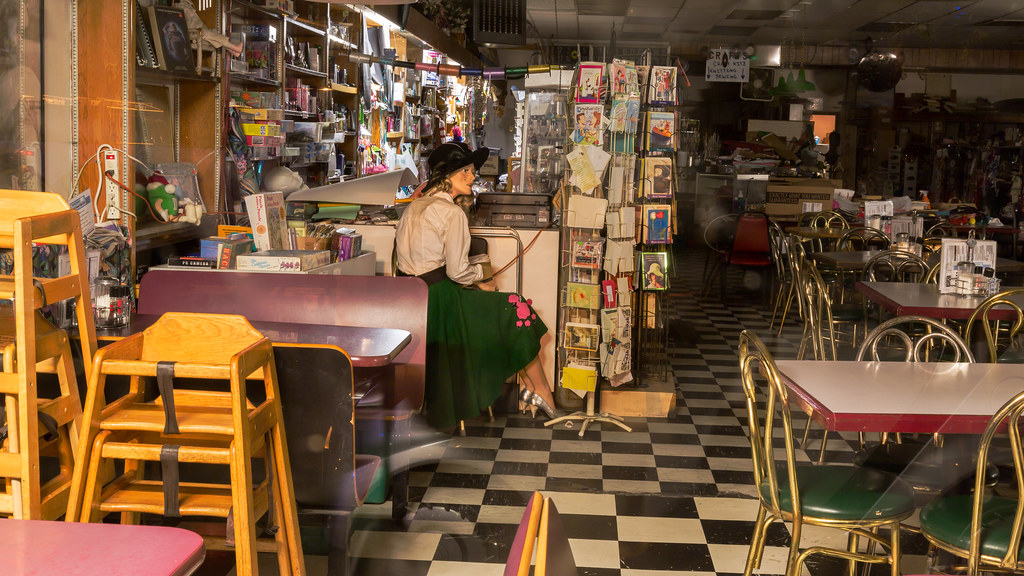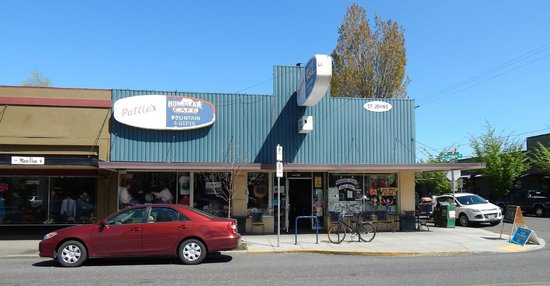North Philadelphia Avenue is the street leading to and from St. John’s Bridge, a utilitarian Portland, Oregon landmark, of which I had formed an extraordinary bond well over a decade ago.
Landing right into town, you take a right onto Lombard Avenue and there is a corner diner there at the next left. It is an old school sock hop soda fountain style diner. It isn’t retro, it has just been there forever. It is called Pattie’s Home Plate.
The landmark restaurant lives there in memory only today. It closed just after I moved to Philadelphia in 2018. According to a friend of mine, the building was nearly sold. Due to structural issues, the deal fell through. Unfortunately, the owner shut down the active restaurant (and two other businesses) in advance of the failed deal, so the building has been vacant ever since.
Anyway.
The “home plate” pun is irresistible. It suggests a starting place and an ending, like rounding the bases you end up where you began. It is a plate of food that you’re seeking, and a refuge like home, but not, because you’re out.
Pattie’s could not really be a true home away from home because it wasn’t open 24/7. Like many restaurants out west, they chose either to be breakfast and lunch, lunch and dinner, or dinner and cocktails. A few modern coffee houses stayed open late, so they fulfilled much of that role.
24/7 restaurants offer a holy atmosphere. Especially in the Northeastern United States, with shining steel surfaces, tiled floors and walls, private booths with vinyl seats, the diner is something between a church and a hospital cafeteria. You go there to be healed — possibly to be saved.
The first 35 years of my life were lived all over the West Coast. There, we do not have the diner tradition like that. In Portland, I can only think of three 24/7 restaurants. There was the Pancake House on Powell, Javier’s (fast Mexican food) on Lombard, and the Roxy on Stark Street. None of these use the term “diner” and they all have some other kind of theme.
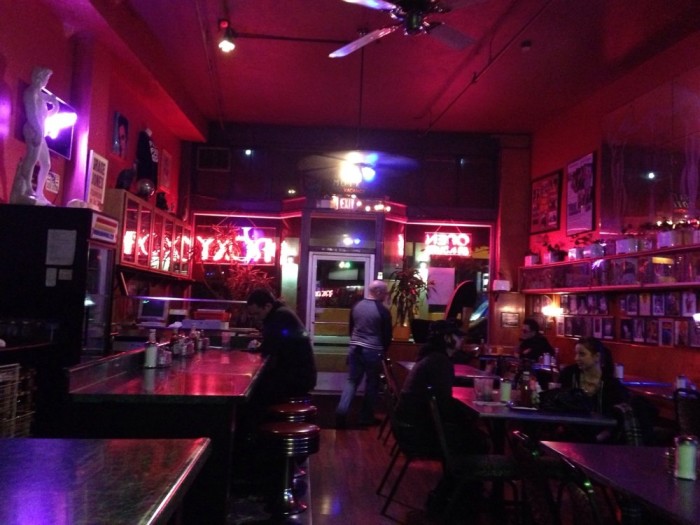
When I was about 20 years old, living in the valley in Los Angeles, I would jump on the 101 and drive like ten miles to the North Hollywood Diner just to drink coffee and eat toast, to read and write, living out a beatnik fantasy that only a young budding stoner intellectual would go out of their way for.
That NOHO spot is an unusual place for LA, even though the city is full of 24/7 donut shops. Portland is full of coffee shops. Tucson has Waffle House and Denny’s. High school kids with cars that hung out there were “Dennys’ Rats.”
A couple of weeks ago, I drove I-95 to and from Florida, and I found Waffle House to rule that route. It is reliable but I consider it a last resort.
The Northeast is different from the rest of the country in many respects, but focusing on the people’s food, burritos are presented with more exoticism and a higher price point in Philly while hoagies are at every corner. Out west, is basically the opposite.
Philadelphia diners have more Italian history to them — always a selection of pasta. New York tends to lean Greek — always a gyro. Jersey diners define the classic all-American melting pot, offering both gyro and pasta.
Jersey diners more often dress the building with steel siding that apparently armors it against the apocalypse. It suggests that this place is bullet-proof: You can rely on it.
The Midwest is different still. I drove through the town that invented sliced bread in Missouri one time, I could not find a sandwich shop, except for Subway.
In Michigan, at least in the areas surrounding Detroit, you will find Coney Island restaurants everywhere, with a range of hot dogs, the typical burgers and omelets, but then it could have some other twist of their own. Usually gyros and pastas are on the menu.
Wherever you go, there is a regional flavor to it anyway. It’s something I love about this country. We have at least 50 different twists on what it means to be American. You absorb a lot about an area just by sitting inside a local diner.
However the people like to lay it out in their land, there will always be some demand for 24-hour food. For me, I want a place to sit. When I am with someone, a booth is great. Alone, the counter, because I can usually banter with the server and get faster coffee refills.
Today, most of the demand for a commuter breakfast is met by gas stations and fast food. Personally, I go to Wawa and Dunkin quite a lot. They solve the problem. Especially Wawa, that place is the gold standard of gas station stops.
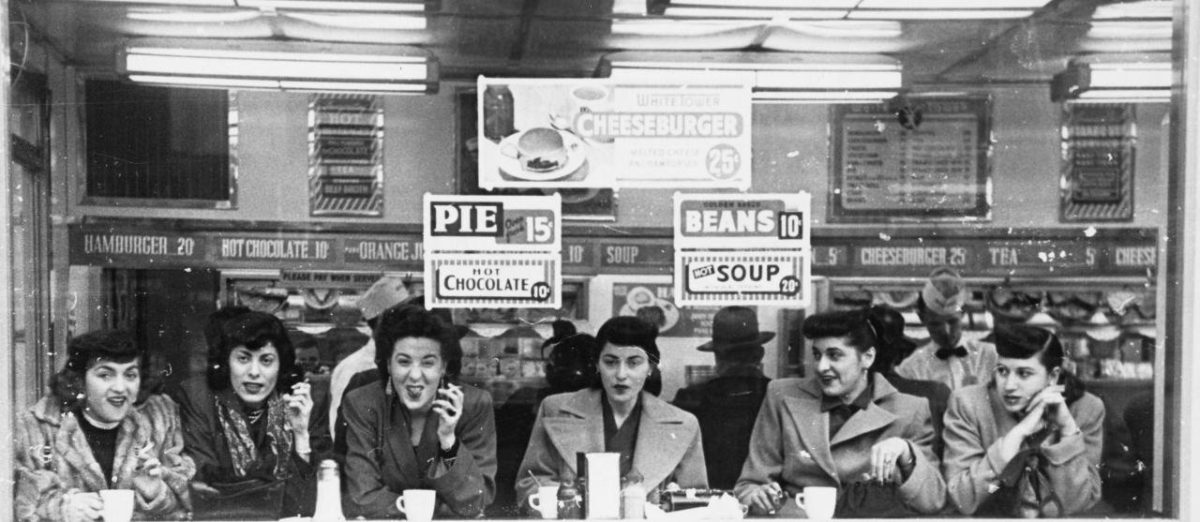
I think about automotive culture and how that evolved the diner into its second generation. Early on, fast food was a hole in the wall near a train station where you could sit down to order a pork chop $0.15, one egg $0.10, toast $0.05, and coffee $.10, and be out in ten minutes for less than a buck, after tip. This was pedestrian life, pre-auto culture. These places are properly called Luncheonettes.
Then the roadside diner sprang up along new highways and freeways interconnecting the nation for the first time since the railroad. This and commuters from the suburbs changed the idea from the hole in the wall by the train stop to a large building with a massive parking lot, huge signage, and lots of booths.
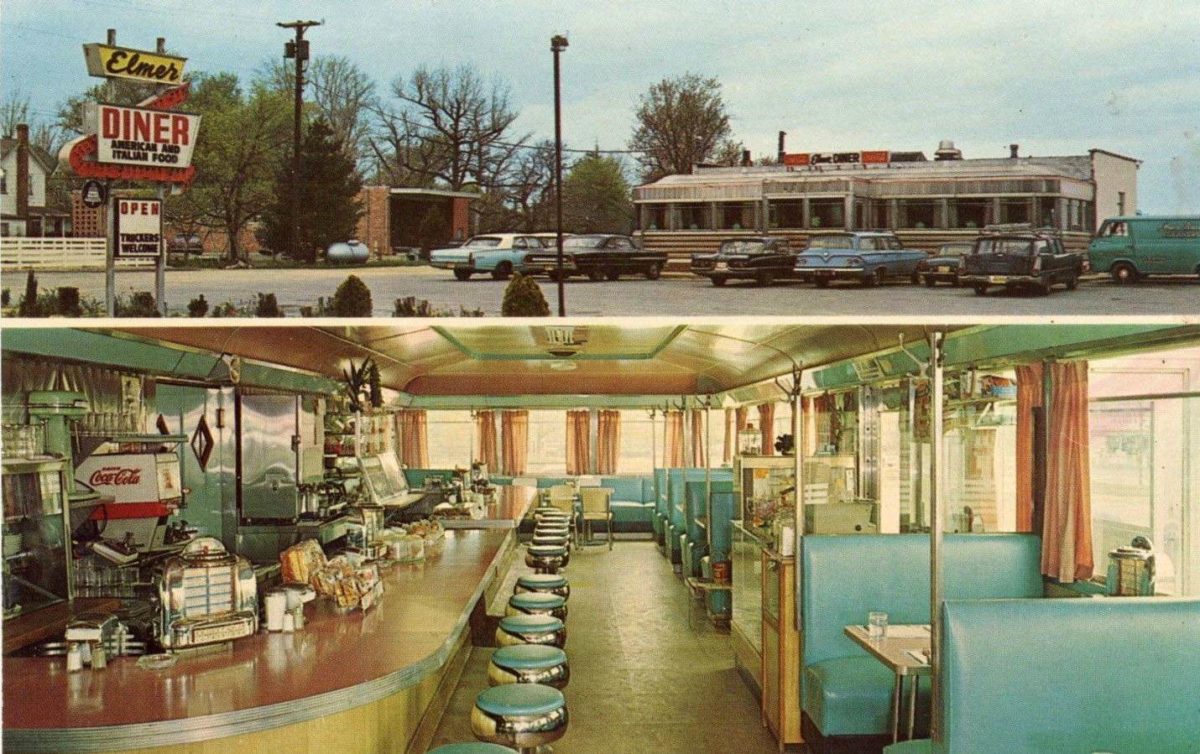
I remember my first truck stop. I was a young boy, a few years old, riding home to Santa Barbara from Arizona after visiting some relatives. There is this remote Interstate 10 diner that was featured in the film, Pee-Wee’s Big Adventure. It was still a new movie at that time — a household favorite — so we had to stop there.
This roadside attraction these great dinosaur structures that you could walk into, where, lo and behold, there was a gift shop. It’s primary goal was to attract business to Wheel Inn, and gas station.
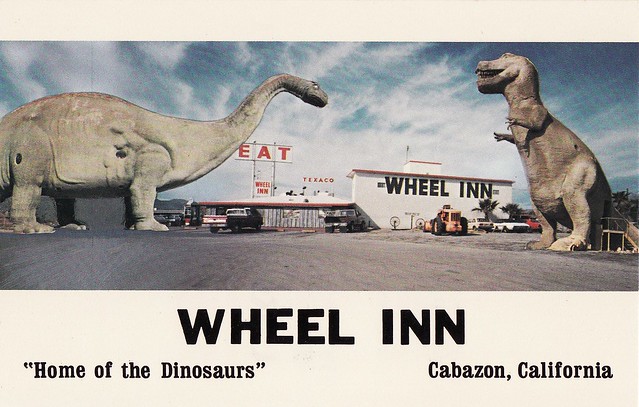
The atmosphere was fun and comfortable, and when the meal came out it was this massive chili burger and fries. I was delighted and exclaimed, “This is why I love truck stops!” And my father shot back, “But you’ve never been to a truck stop.”
He was making fun of me a little. But he wasn’t gaslighting me, it was true. Only I am sure that I knew what I was talking about. It turns out I was right. They are delightful.
I stopped in there in 2018 but the restaurant was already gone and the dinosaurs became the main attraction.
We didn’t have any diners around Santa Barbara, although I’d say humble restaurants with standard fare were far more common than today. Santa Barbara has been a gradual gentrification process, to become an epicenter of chic world-class dining. It is not the same town, but even around 1986, the road to its future was being paved in sun-dried tomatoes and sprouts.
Today, the self-awareness of being a diner is a marketing concept. Before, it was just typical American dining: Always bread on the table, and always soup or salad before the meal. There are a few places that just keep doing what they’ve been doing for decades, and those places feel real. Too many new diners try to reinvent them to satisfy the bourgeoise. It is dumb.
It is always dumb to focus your attention on the people who do not frequent your business.
I made it my business more than three years ago, when I moved here, to visit every diner in the city. Whenever I think I am close to meeting the goal, I see one that I wasn’t aware of.
Honestly, I accelerated my pace on that this year, due to domestic problems. I was three months into an eviction case that was severely protracted, thanks to the CDC eviction moratorium, and subsequent local laws based on that order. The tenant became irate and destructive, so to protect myself, I began to stay with other people. My presence in my own home became covert. I was avoiding the place like hell.
During that desperate period of three months, I ate a lot of meals, and killed a lot of time, in diners. Even without 24/7 service, these places were available all over the place. The pressures of surviving that ordeal were alleviated by women asking me how I like my eggs, pouring refills of coffee. It was my hospital and church, especially in the morning. It was my home plate.
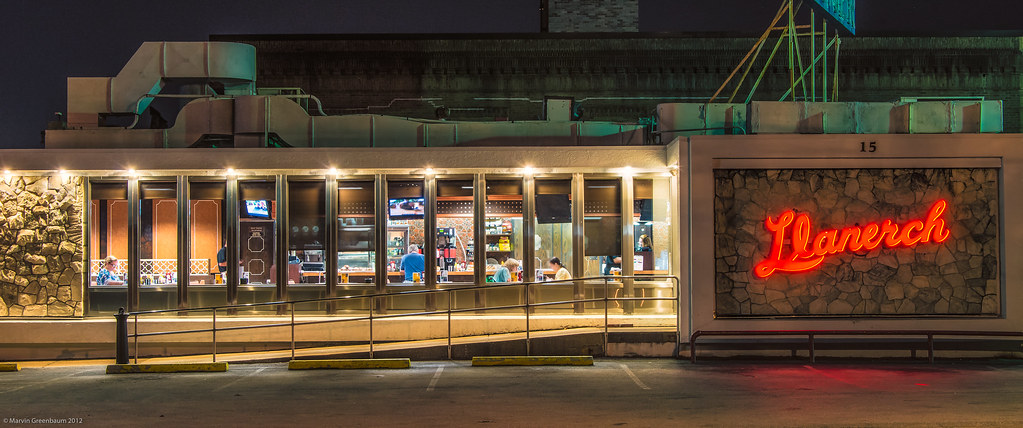
It was a winning strategy, but arduous. Today, I get to go to the diner not out of desperation but again to enjoy myself, to meet with someone, or simply to get a break from the road.
And I have so much experience with them now, I could write a review for each one. The criteria for what makes a good experience is entirely my own. I would say in general, diner owners should hold back on LED strip lighting and modern tile designs. I don’t want to name names, but some of our best places are remodeled into oblivion.
Return to 24/7 as soon as possible, god willing someone likes working overnight. And keep the menu traditional, just improve the quality of the food, like spending an extra nickel on cage free eggs. If you’re about to spend $50K on bad tile installations, please consider the eggs. That is all. Thank You. I’ll see you soon anyway.
SOURCES:
Luncheonette, Bowery Boys Podcast
Elmer Diner, Flashbak
Wheel Inn Demolished, Rusting Relics
